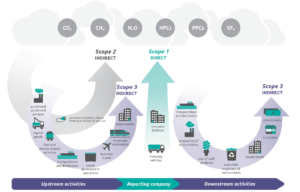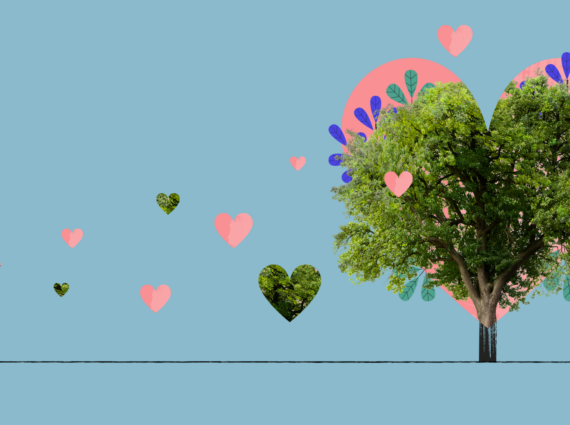1. Introduction
Climate change is a global problem caused by increased levels of greenhouse gas emissions. These emissions accelerated after the middle of the last century, with the first industrial revolution and the introduction of internal combustion engines into general circulation. Humanity is responsible for the changes around the world, having distorted the natural balance of all ecosystems by introducing carbon dioxide and its equivalents into the atmosphere. We are responsible for climate change, so we must also take responsibility for stopping it and reducing our negative impact on the environment before it is too late.
The United Nations has ratified many documents that aim to protect the climate. Among the most important are the United Nations Framework Convention on Climate Change and the Kyoto Protocol signed in 1992, and the Paris Agreement signed in 2015. These documents unequivocally resolve that the world must take responsibility for reducing greenhouse gas emissions in both developed and developing countries. Importantly, the need to extend reductions to the private sector as an equally high contributor to global warming is also indicated. At this level, however, individuals were not included in the documents, even though they are ultimately consumers of most products and services.
The term “carbon neutrality” has also emerged in the course of international efforts to encourage people to reduce their emissions and to support them in choosing those products that are sold with labels indicating zero CO2 emissions left in the life cycle of the product. Today, the number of organizations and entities that are carbon neutral and support active protection of the Earth’s climate is growing significantly. These organizations recognize the importance of carbon neutrality and its relevance to incorporate CSR strategy. They are striving to achieve it, thereby acting against global climate change. Increasingly, private and business customers are choosing products and services provided by conscious and responsible suppliers.
This study undertakes an evaluation of the role of business in reducing CO2 emissions to achieve carbon neutrality and net-zero CO2 emissions. TerGo will soon be providing eco-solutions in a mobile app for individuals willing to cut down on their carbon emissions. At this point, TerGo offers services that help all entities (organizations, companies, and individuals) achieve the goals in their GHG reduction plans. All entities striving for carbon neutrality can benefit from these services. The process of GHG reduction planning begins with calculating and monitoring an entity’s carbon footprint. An accurate strategy for carbon offsetting and achieving carbon neutrality can only be determined after a detailed evaluation of the entity’s actual carbon footprint. All emissions that have been identified as reducible can be reduced with TerGo by implementing cost-effective and efficient programs. The remaining emissions that have not been reduced can be offset – TerGo runs a wide range of sequestration projects worldwide that provide high-quality carbon credits to offset unavoidable CO2 emissions. Furthermore, TerGo also assists its customers in building a green brand image by offering marketing and communication strategies to promote actions taken for the climate.
2 Carbon Neutrality
The term “carbon neutrality” refers to the offsetting of all CO2 emissions that occur as a result of a person or organization’s activities over a specified period of time (day, week, month, or year). The Intergovernmental Panel on Climate Change (IPCC) explains the term as a balance between the CO2 emitted by human activity to the atmosphere and that sequestered from the atmosphere over a specified period of time. Through various processes, organizations and individuals can achieve carbon neutrality by neutralizing their CO2 emissions.
The European Commission defines climate neutrality as the balance between the amount of CO2 emitted into and captured from the atmosphere. If this balance equals zero, we can speak of net-zero emissions, ergo carbon neutrality.
In 2015, the United Nations Framework Convention on Climate Change launched an initiative called Climate Neutral Now. It aims to increase climate activism by engaging various actors such as local governments, companies, organizations and individuals to promote and voluntarily participate in the carbon credit market. The initiative supports and encourages these actors to achieve carbon neutrality globally by 2050 the latest, as specified in the Paris Agreement. Achieving this goal will translate to limiting global warming to 1.5 degrees Celsius, enabling humanity to avoid the worst of the climate change effects.
3. Net-zero emissions
This term refers to achieving zero CO2 emissions by reducing CO2 emissions at the source as much as possible and insetting or offsetting the remaining CO2 emissions that have not been reduced. The IPCC defines this term as the offsetting of greenhouse gas emissions resulting from human activities through planned reductions over a specified period of time. However, this definition is very broad.
The term zero CO2 emissions can also refer to the total reduction of GHGs arising at the source, in all scopes (Scope 1, 2 and 3).
4. How to achieve carbon neutrality?
There are many ways to reduce emissions and achieve carbon neutrality by offsetting emissions created in one sector by reducing them elsewhere. This goal can be achieved by investing in renewable energy sources, increasing energy efficiency, or investing in clean technologies with a low carbon footprint and afforestation projects that rely on CO2 sequestration. One of the systems for carbon offsetting is the European Union Emissions Trading System (EU ETS).
The first step to carbon neutrality for an individual, organization, product or service is to determine the GHGs emitted into the atmosphere. These emissions are also called the carbon footprint or CO2e (carbon dioxide equivalents). CO2e refers to all greenhouse gases and, as a unit, describes them by relating them to carbon dioxide and its impact on global warming. CO2 standards divide emission sources into 3 scopes:
– Scope 1: related to direct emissions resulting from burning fuel, use of cooling equipment, and owned vehicle fleet;
– Scope 2: related to indirect emissions from activities linked to energy consumption, use of heating equipment;
– Scope 3: refers to all indirect emission sources, related to other activities. Scope 3 emissions come from resources that are not owned or controlled by the organization, but over which the organization has indirect influence in its value chain. Scope 3 emissions include all sources except those in scopes 1 and 2. Often, scope 3 emissions, referred to as value chain emissions, make up the majority of an organization’s overall GHG emissions. Therefore, there are significant opportunities to reduce emissions from this scope because an organization can influence its suppliers, for example, by selecting those service providers that operate with a minimal or zero carbon footprint.
Scope 3 can be challenging for many companies and organizations, particularly for calculating product carbon footprint, upstream or downstream emissions, and end-of-life product disposal. This is due to the difficulty in identifying all of the supply chain elements associated with a product’s lifecycle and the problems in controlling those emissions that are beyond the control of the company or organization.
The breakdown of Scope 1, 2 and 3 emissions is illustrated in the graphic below.
Emissions breakdown according to the Greenhouse Gas Protocol
Source: WRI/WBCSD Corporate Value Chain (Scope 3) Accounting and Reporting Standard
5. TerGo solutions to achieve carbon neutrality and net-zero emissions
Consumer willingness to pay (WTP) for carbon-neutral products remains unknown. While there is an extensive literature on consumer preferences and WTP for various sustainability labels, carbon neutrality labels have been introduced relatively recently. Fortunately, information related to the global warming impact of a product or service is being placed on products with increasing frequency. Several studies related to the certification of carbon neutral products have already been conducted (Canavari and Coderoni, 2020). These have provided inconclusive results, highlighting the difficulties consumers have in interpreting and understanding different labels relating to the climate change impacts of a product/service (Gadema and Oglethorpe, 2011; Grunert et al., 2014; Vanclay et al., 2011).
TerGo provides a wide range of solutions for individuals, companies, and organizations to calculate climate change impact and estimate GHG emissions. TerGo experts identify major sources of CO2 emissions, plan emission reductions, and provide tools to reduce emissions at the source (such as TERs created in the TerGo app). What’s more, the app provides opportunities to earn True Emission Reduction (TERs) credits by reducing emissions and making better environmental choices, such as taking the bus instead of the car, buying carbon neutral products, saving energy and taking other actions that result in a lower carbon footprint.
TERs can then be sold to companies, organizations, or other individuals who need to offset their emissions on the road to carbon neutrality. Funds from the sale will be donated to the TERs creator (user) in the app. TerGo also provides other solutions for a variety of entities to offset CO2 emissions using carbon credits from forestry projects in Belize. This project creates VER (Voluntary Emission Reduction) carbon credits. The forestry project in Belize involves the afforestation of unused land subjected to excessive logging.
The services and solutions offered by TerGo raise awareness by promoting trends of using carbon neutral products and services. They also provide market tools to reduce GHGs and protect the environment by allowing TERs carbon credits to be earned by those who purchase carbon neutral products instead of the regular ones.
TerGo also helps plan and implement insetting: a carbon offsetting model based on a company or organization’s value chain. This is the most effective form of reducing emissions. Companies using insetting integrate sustainability practices into their operations, thereby reducing their carbon footprint. Insetting harmonizes company’s activities with the rhythms of nature within its operating structures – with TerGo you can plan both insetting and offsetting strategies for your company.
6. Summary
Many solutions for reducing greenhouse gas emissions can be implemented by individuals through their decisions and everyday behaviour. If we change our behaviour and, for example, take the bus more often instead of a car, we will not only save money but also reduce our fuel consumption while increasing our positive impact on the environment by avoiding CO2 emissions from burning fossil fuels. The difference between travelling in a petrol or diesel car and an electric bus is huge: the carbon footprint of each bus passenger is incomparably smaller than the carbon footprint of someone travelling alone in a car. TerGo users will not only save money by taking the bus, but will also earn TERs in the app – a bonus for choosing the greener behaviour.
Those who choose to change their behaviour to be more environmentally friendly will be able to learn about their positive impact on the atmosphere thanks to TerGo. The number of TERs earned reflects the number of kilograms of CO2 saved. For example, a person who travels 10 km by bus instead of driving will save 2.594 kg of CO2. Exactly the same number of TERs will be credited to his account: 2.549 TERs.
Another example: if a user chooses a carbon-neutral beverage instead of a regular one, his/her account will also be credited with a number of TERs corresponding to the CO2 savings compared to standard purchases. This mechanism supports and promotes not only individual consumer decisions, but also creates a positive trend in the market, helping producers who are striving for carbon neutrality.
TerGo believes that we as individuals are the foundation of the global change. Each of us individually and together as a community contribute to reducing greenhouse gases on a global scale.
7. References
Canavari and Coderoni, 2020, Consumer stated preferences for dairy products with carbon footprint labels in Italy, Agric. Food Econ., 8 (2020), pp. 1-16, 10.1186/s40100-019-0149-1
Gadema and Oglethorpe, 2011, The use and usefulness of carbon labelling food: a policy perspective from a survey of UK supermarket shoppers, Food Pol., 36 (2011), pp. 815-822, 10.1016/j.foodpol.2011.08.001
IPCC, 2018: Annex I: Glossary [Matthews, J.B.R. (ed.)]. In: Global Warming of 1.5°C. An IPCC Special Report on the impacts of global warming of 1.5°C above pre-industrial levels and related global greenhouse gas emission pathways, in the context of strengthening the global response to the threat of climate change, sustainable development, and efforts to eradicate poverty [Masson-Delmotte, V., P. Zhai, H.-O. Pörtner, D. Roberts, J. Skea, P.R. Shukla, A. Pirani, W. Moufouma-Okia, C. Péan, R. Pidcock, S. Connors, J.B.R. Matthews, Y. Chen, X. Zhou, M.I. Gomis, E. Lonnoy, T. Maycock, M. Tignor, and T. Waterfield (eds.)]. In Press
J.K. Vanclay, J. Shortiss, S. Aulsebrook, A.M. Gillespie, B.C. Howell, 2011, Customer response to carbon labelling of groceries, J. Consum. Pol., 34 (2011), pp. 153-160
K.G. Grunert, S. Hieke, J. Wills, 2014, Sustainability labels on food products: consumer motivation, understanding and use Food Pol., 44 (2014), pp. 177-189, 10.1016/j.foodpol.2013.12.001
News European Parliament, 2019, What is carbon neutrality and how can it be achieved by 2050?, https://www.europarl.europa.eu/news/en/headlines/society/20190926STO62270/what-is-carbon-neutrality-and-how-can-it-be-achieved-by-2050
UNFCCC, 1992, Kyoto Protocol, https://unfccc.int/resource/docs/publications/08_unfccc_kp_ref_manual.pdf
UNFCCC, 2015, Paris Agreement, https://unfccc.int/sites/default/files/english_paris_agreement.pdf
UNFCCC, 2015: Climate Neutral Now, https://unfccc.int/climate-action/climate-neutral-now. Accessed: Sep, 2021.
WRI/WBCSD Corporate Value Chain (Scope 3) Accounting and Reporting Standard (pdf), https://ghgprotocol.org/sites/default/files/standards/Corporate-Value-Chain-Accounting-Reporing-Standard_041613_2.pdf






